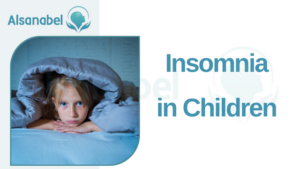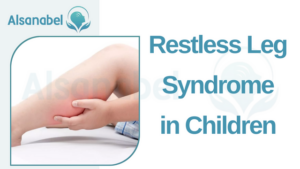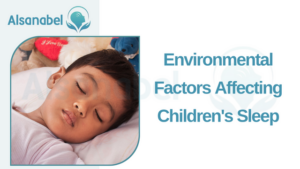Signs of Sleep Disorders in Children 2023
- Category ADHD
Table of Contents
ToggleSleep Disorders in Children
Sleep disorders can significantly impact the overall health and well-being of young children. It is estimated that between 20% and 30% of children experience sleep disorders, which can include difficulties in falling asleep (dyssomnias) or undesirable phenomena during sleep (parasomnias) such as sleep terrors and sleepwalking. Children with physical or learning disabilities are at an increased risk of developing sleep disorders.
What are sleep disorders in children?
Sleep disorders in children refer to conditions that affect the quality and pattern of their sleep. These disorders can disrupt the child’s ability to fall asleep, remain asleep, or have a restful sleep, leading to daytime sleepiness and impaired functioning.
Common symptoms of sleep disorders in children may include bedtime resistance, difficulty falling asleep, frequent awakenings during the night, nightmares, night terrors, sleepwalking, and excessive daytime sleepiness. These disruptions can have a negative impact on a child’s physical, cognitive, and emotional development.
Insomnia in Children
Insomnia, the inability to fall asleep or stay asleep, is not limited to adults; it can also affect children of all ages. Childhood insomnia is characterized by frequent night wakings, difficulties falling asleep, bedtime battles, and waking up early in the morning. This sleep disorder can have a significant impact on a child’s overall well-being and development.

Causes of insomnia in children
There are several factors that can contribute to insomnia in children. Some influencing factors include a lack of sleep, an irregular sleep schedule, illness, stress, or certain medications. It is essential for parents to identify the underlying cause of their child’s insomnia in order to effectively address it.
A common cause of insomnia in children is a disrupted sleep pattern. This can occur due to a change in routine, travel, or other disruptions to their usual sleep environment. Additionally, physical discomfort, such as pain or discomfort from illnesses like asthma or allergies, can also contribute to sleep difficulties.
Emotional factors, such as anxiety or stress, can also disrupt a child’s sleep. Children may have trouble falling asleep or wake up in the middle of the night due to worries or fears. In some cases, certain medications, such as those used to treat ADHD, can also interfere with a child’s ability to fall asleep.
Treatment options for childhood insomnia
The good news is that childhood insomnia is highly treatable. The first step in addressing insomnia is to establish a consistent sleep routine and create a sleep-friendly environment. This includes setting a regular bedtime, ensuring a comfortable sleep environment, and implementing relaxing bedtime rituals.
If the insomnia persists despite these measures, there are treatment options available. Behavioral techniques, such as sleep restriction therapy and stimulus control therapy, can be effective in promoting healthy sleep habits and addressing insomnia. In some cases, melatonin supplements or prescription medications may be recommended by a healthcare professional.
It is important for parents to consult with a pediatrician or sleep specialist to determine the best course of treatment for their child’s insomnia. With proper intervention, most cases of childhood insomnia can be resolved, allowing the child to get the restful sleep they need for their development and well-being.
Sleep Apnea in Children
Sleep apnea is a common sleep disorder that affects both adults and children. In children, sleep apnea is often caused by obstructive sleep apnea (OSA), which occurs when the upper airway becomes partially or completely blocked during sleep. This obstruction leads to pauses in breathing, resulting in disrupted sleep and decreased oxygen levels in the body. It is estimated that around 2-4% of children suffer from OSA.
Symptoms and risk factors of sleep apnea in children
Children with sleep apnea may exhibit various symptoms, including loud snoring, pauses in breathing during sleep, restless sleep, daytime sleepiness, behavioral issues, poor academic performance, and bedwetting. OSA can also have significant implications for a child’s cardiovascular health, as it leads to recurrent intermittent hypoxemia (a decrease in blood oxygen levels), increased oxidative stress, and alterations in heart function.
Several risk factors can increase a child’s likelihood of developing sleep apnea. These include obesity, a family history of sleep apnea, certain craniofacial abnormalities (such as a small jaw or large tonsils), Down syndrome, and other medical conditions that affect the upper airway, such as allergies or asthma.
Diagnosis and treatment of sleep apnea in children
Diagnosing sleep apnea in children involves a comprehensive evaluation that may include a detailed medical history, physical examination, and overnight sleep study (polysomnography). This sleep study monitors various parameters, including breathing patterns, oxygen levels, and brain activity, to assess the severity of the sleep apnea.
Treatment options for sleep apnea in children can vary depending on the underlying cause and severity of the condition. For milder cases, lifestyle modifications may be recommended, such as weight loss, avoiding allergens, or changing sleep positions. In cases where these measures are not sufficient, interventions such as continuous positive airway pressure (CPAP), which helps keep the airway open during sleep, may be prescribed.
Surgical options, such as adenotonsillectomy (removal of the tonsils and/or adenoids), may be considered in children with anatomical obstructions. It is important for parents to work closely with healthcare professionals, including pediatricians and sleep specialists, to determine the most appropriate treatment plan for their child’s sleep apnea.
By addressing sleep apnea in children, not only can their sleep quality and overall well-being improve, but potential long-term health complications can also be prevented. Timely diagnosis and treatment are crucial for ensuring that children can get the restful and restorative sleep they need for proper growth and development.
Restless Leg Syndrome in Children
Restless Leg Syndrome (RLS) is a neurological sleep disorder that is characterized by an irresistible urge to move the legs, often accompanied by uncomfortable sensations. While RLS is commonly associated with adults, it can also affect children. The prevalence of RLS in children is estimated to be around 2-3%.

Signs and symptoms of restless leg syndrome in children
Children with restless leg syndrome may experience various symptoms that can significantly impact their sleep quality and overall well-being. These symptoms often manifest in the evening or at nighttime and may include:
- An uncomfortable or “creepy-crawly” sensation in the legs.
- An overwhelming urge to move the legs, which provides temporary relief.
- Restlessness and difficulty sitting or lying still, especially during bedtime.
- Disrupted sleep patterns, including trouble falling asleep or staying asleep.
- Excessive daytime sleepiness leading to fatigue and difficulty focusing in school.
- Irritability and mood changes due to poor sleep quality.
It is important to note that children may have difficulty describing these sensations accurately, making the diagnosis challenging. However, healthcare providers can often diagnose RLS based on the child’s reported symptoms and medical history.
Managing restless leg syndrome in children
The management of restless leg syndrome in children involves a combination of lifestyle changes, non-pharmacological interventions, and, in severe cases, medication. Some strategies that can help alleviate symptoms include:
- Establishing a consistent bedtime routine and creating a relaxing sleep environment.
- Encouraging regular exercise and physical activity during the day.
- Avoiding caffeine and stimulating activities close to bedtime.
- Using relaxation techniques, such as deep breathing exercises or guided imagery, to promote better sleep.
- Applying warm or cold compresses to the legs to help alleviate discomfort.
- Engaging in stretching exercises or gentle leg massages to relieve sensations.
In more severe cases where symptoms significantly impact a child’s quality of life, medications such as dopaminergic agents or iron supplements may be prescribed under the guidance of a healthcare professional.
By effectively managing restless leg syndrome in children, it is possible to improve their sleep quality, reduce daytime symptoms, and enhance their overall well-being. Parents and caregivers should work closely with healthcare providers to develop a personalized treatment plan that addresses their child’s specific needs.
Nightmares and night terrors
Nightmares and night terrors are two common sleep disturbances that can occur in children. Differentiating between these two can help parents better support their child when they experience these episodes.
Nightmares are vivid and disturbing dreams that tend to occur during the REM sleep stage. Children often wake up from nightmares feeling scared, anxious, or upset. They may recall the details of their dream and may need comfort and reassurance from their parents to go back to sleep.
On the other hand, night terrors are abrupt and intense episodes of fear or terror that occur during non-REM sleep. Children experiencing night terrors may appear to be awake, but they are often confused, agitated, and inconsolable. Unlike nightmares, children usually have no memory of the event the next day. Most children will go back to sleep on their own after a night terror episode.
Tips for dealing with nightmares and night terrors in children
- Create a soothing bedtime routine: Establishing a consistent and calming bedtime routine can help children feel more relaxed and secure before going to sleep. This can include activities such as reading a book, taking a warm bath, or listening to gentle music.
- Provide a safe sleeping environment: Ensure that your child’s bedroom is comfortable, quiet, and conducive to sleep. Remove any potential distractions or sources of fear, such as scary posters or excessive lighting.
- Offer reassurance and comfort: When your child wakes up from a nightmare, provide a comforting and nurturing presence. Talk to them about their dream, offer reassurance that it was not real, and remind them that they are safe. For night terrors, it is best to observe from a distance and ensure that your child is safe without waking them.
- Limit exposure to stimulating content: Avoid exposing children to frightening or violent media content, especially close to bedtime. Monitor their screen time and ensure they have a healthy balance of activities throughout the day.
- Seek medical advice if necessary: If your child’s sleep disturbances persist and significantly impact their quality of life, it may be beneficial to consult with a healthcare professional who specializes in pediatric sleep disorders. They can provide further evaluation, guidance, and appropriate treatment options.
By understanding the differences between nightmares and night terrors and implementing effective strategies to manage these sleep disturbances, parents can help their children establish healthy sleep patterns, ensuring their overall well-being and development.
Narcolepsy in Children
Sleep disorders can have a significant impact on children’s overall well-being and daily functioning. One such disorder is narcolepsy, a rare neurological condition characterized by excessive daytime sleepiness and sudden loss of muscle control, known as cataplexy. It is crucial for parents and caregivers to be aware of the symptoms and diagnosis of narcolepsy in children, as well as effective strategies to manage and alleviate its effects.
Symptoms and diagnosis of narcolepsy in children
The symptoms of narcolepsy in children primarily include excessive daytime sleepiness and cataplexy. Excessive sleepiness can manifest as persistent fatigue, difficulty staying awake during the day, and a constant need for napping. Cataplexy refers to sudden episodes of muscle weakness or loss of muscle control triggered by strong emotions such as laughter or excitement.
Diagnosing narcolepsy in children can be challenging, as symptoms may overlap with other sleep disorders. A comprehensive evaluation by a healthcare professional specializing in pediatric sleep disorders is essential. This may involve reviewing the child’s medical history, conducting physical examinations, and performing diagnostic tests such as polysomnography and multiple sleep latency tests.
Managing narcolepsy in children
Once narcolepsy is diagnosed, a three-pronged treatment approach is typically recommended. Medications can help manage excessive daytime sleepiness and cataplexy, such as stimulants to promote wakefulness and antidepressants to control cataplexy episodes. Lifestyle and behavior modifications are also crucial in managing narcolepsy symptoms, including maintaining a consistent sleep schedule, incorporating regular exercise, and practicing good sleep hygiene.
Furthermore, it is vital to educate teachers, coaches, and others involved in the child’s life about narcolepsy and how it can affect their ability to function. This may include providing information on the child’s specific needs, accommodations that may be required in the school setting, and strategies to support their overall well-being.
Environmental Factors Affecting Children’s Sleep
Sleep is crucial for children’s overall health and development, and various environmental factors can significantly impact their quality of sleep. In this section, we will explore the impact of technology on children’s sleep and discuss ways to create a conducive sleep environment for them.

Impact of technology on children’s sleep
In today’s digital age, technology has become an integral part of children’s lives. However, excessive use of electronic devices, such as smartphones, tablets, and computers, can disrupt their sleep patterns. The blue light emitted by these devices suppresses the production of melatonin, a hormone that regulates sleep-wake cycles.
This makes it harder for children to fall asleep and can lead to sleep disturbances throughout the night. It is important to establish technology-free zones and set limits on screen time, especially close to bedtime. Encouraging activities that promote relaxation, such as reading a book or engaging in quiet play, can help children wind down before sleep.
Creating a conducive sleep environment for children
The sleep environment plays a significant role in ensuring a restful night’s sleep for children. Here are some tips for creating a conducive sleep environment:
- Comfortable bedding: Choose a comfortable mattress and pillows that support their growing bodies. Opt for breathable fabrics and ensure that the room is at a comfortable temperature.
- Noise control: Minimize noise disturbances by using white noise machines or fans to create a soothing background sound. Additionally, consider using earplugs or soundproof curtains if the room is exposed to outside noises.
- Darkness: Use blackout curtains or blinds to block out external light sources that can disrupt their sleep. A dark room promotes the production of melatonin, signaling the body to sleep.
- Limit distractions: Keep the bedroom free from toys, clutter, and electronics that may distract children and disrupt their sleep. Create a calm and serene environment that promotes relaxation.
By understanding and addressing the environmental factors that affect children’s sleep, parents and caregivers can play a vital role in promoting healthy sleep habits. Ensuring a technology-free bedtime routine and creating a comfortable sleep environment can improve the quality and quantity of their sleep, leading to improved overall well-being and development.
Importance of addressing sleep disorders in children
Sleep disorders in children and adolescents are often neglected in public health education and professional training. However, they can have lasting effects on a child’s development and overall health. Sleep disorders, such as insomnia, sleep apnea, and restless leg syndrome, can lead to difficulties in concentration, memory, and emotional regulation. In some cases, they can also contribute to behavioral problems, hyperactivity, and even increased risk of accidents.
It is essential to recognize and address sleep disorders in children early on to minimize these risks and improve their quality of life. Consulting with healthcare professionals, such as pediatricians or sleep specialists, can provide valuable insights and guidance in managing sleep disorders effectively.
Tips for promoting healthy sleep habits in children
Establishing good sleep hygiene and promoting healthy sleep habits can significantly improve a child’s quality of sleep. Here are some tips to help parents and caregivers promote healthy sleep habits in children:
- Consistent sleep schedule: Set a regular bedtime and wake-up time for your child, even on weekends. This helps regulate their internal clock and promotes better sleep.
- Create a conducive sleep environment: Ensure the bedroom is quiet, dark, and comfortable. Use white noise machines, blackout curtains, and comfortable bedding to create an ideal sleep environment.
- Limit electronic devices: Avoid exposure to electronic devices, such as smartphones or tablets, close to bedtime. The blue light emitted by these devices can disrupt sleep patterns. Encourage quiet activities like reading or relaxing before bed.
- Encourage relaxation techniques: Teach children relaxation techniques, such as deep breathing or guided imagery, to help them wind down before sleep.
- Limit caffeine intake: Avoid giving children caffeine-containing beverages, such as soda or energy drinks, especially in the afternoon and evening. Caffeine can interfere with their ability to fall asleep.
By implementing these tips and prioritizing healthy sleep habits, parents can help their children develop better sleep patterns and reduce the risk of sleep disorders. The better informed parents and children are about sleep, the better they can cope with and reduce sleep problems, leading to improved overall well-being.









